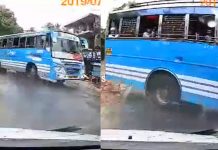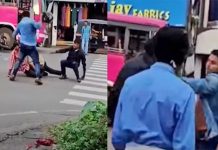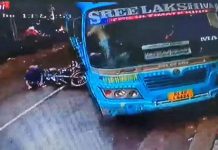While talking about the subject of distracted driving the other day, it occurred to me that part of the problem, especially among younger drivers, is the lack of visual awareness in general and more specifically poor search habits.
Distracted driving is a major problem. Any distraction results in delayed recognition and the need to do something, to steer, brake or accelerate. Many times the result is a crash.
Recognition and awareness are key factors when driving. How soon we see something, and how quickly we are able to recognize it may be a problem, sets up our reaction. Our driving ability, based mostly on past experience, then becomes the central factor.
But if we don’t see something in time to process the fact it is a problem, all the skills and reflexes in the world can’t bail us out.
This leads to the incredibly important issue of time and space and how they relate to what you see and do behind the wheel – see something in time to identify a problem and you can evade.
VIDEO – Skilled KSRTC & SETC Driver Skipping Accidents in Kerala Roads
Video – AV Studioz.
Improper visual search is the most common cause of crashes among young or inexperienced drivers. Lacking sufficient experience, they do not know where to look, what to look for and how much time and space is needed to take corrective action. As a result, they are often caught in situations where they don’t have time for appropriate action – assuming they know what action to take.
But this isn’t only a problem for new drivers; it plagues us all.
Visual search – the process of scanning the road and surrounding environment and picking up on situations or other road users that may interact with our path of travel – gives us time to react accordingly.
This is easily the single most important skill a new driver must learn and that an experienced driver should practice.
There is no sense having the visual acuity of a hawk and the vehicle-handling skills of a professional race driver if we don’t identify potential problems in time to take action. Similarly, if the mind is on something else – distracted – there will be a delay in recognition and reaction.

The traffic environment is dynamic – constantly changing, every millisecond. To stay on top of this situation we must look at the full environment: ahead, to the side and behind. The more crowded the environment, by vehicles or people, and the greater our speed, the more important it is to stay alert.
Most experts suggest we look at least 12 seconds ahead, some as much as 30 seconds. The theory is the same. If we can see something in time to adjust our driving or course we will never have to make last-minute decisions.
Keeping our line of sight up takes constant practice and work. One trick is to identify a static object on the road ahead and start to count one, one thousand; two, one thousand, etc., until you pass the object. If you pass it before you get to 12, one-thousand, you are not looking far enough ahead. This is a case of the further the better. Even when looking this far ahead you are aware of everything between the hood of your vehicle and the spot you are looking at.
Many training programs use the one-second rule, which says that if you had one additional second to deal with a traffic situation you could avoid a crash.
At 100 km/h, a vehicle travels about 27 metres each second. If we had that much additional warning, we would have 27 metres more space to stop or turn. That’s one second – you quickly see the significance of 12 to 20 seconds!
Obviously, staring at a fixed object is not enough. We must also scan the traffic scene, constantly monitoring the situation not only ahead but to the side and rear using our mirrors. This process should be repeated frequently – very frequently – because the traffic environment is changing constantly with new threats and situations appearing literally every second – or less!
The trick is to develop a system or habit, constantly moving your vision from front to side to rear to the other side and back to the front, then scanning from side to side way ahead, concentrating on the intended path of travel.
There is a tremendous amount of data to be collected and processed including signs, signals, markings, vehicles, bicycles, pedestrians, animals, weather conditions and more. We must then sort that information according to priority and possible impact on our situation.
Because we are in motion and changing our relationships with each of these factors every millisecond – some of which may be in motion themselves – it is a constant process.
Processing all this information and prioritizing it, is the answer to safe driving. We must be able to ask and answer the “what if” scenario, making allowances for the huge variety of possible situations.
By expecting the unexpected and having a plan or course of action we can avoid almost any possible eventuality.
But first we must be alert and looking.



















